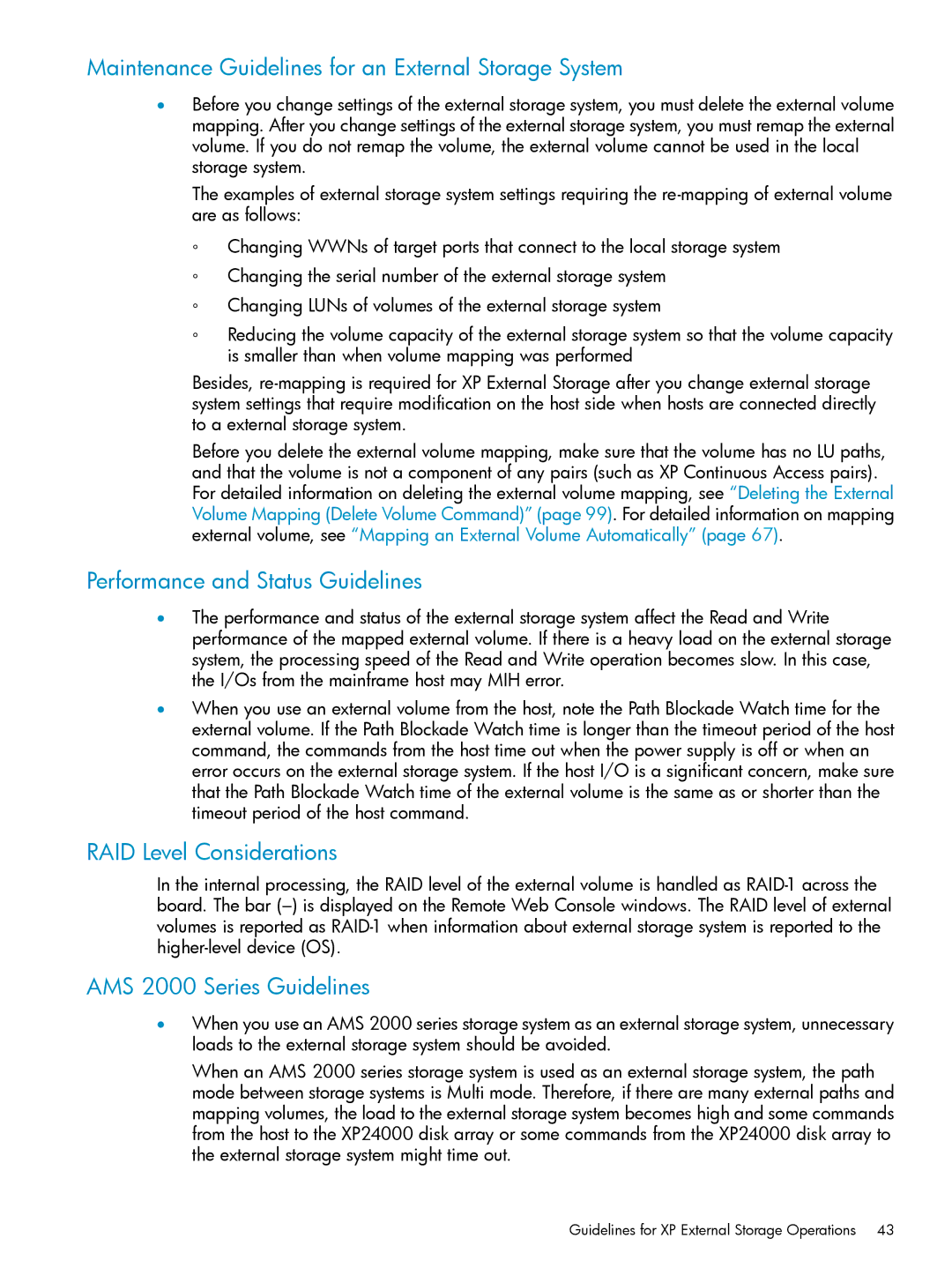Maintenance Guidelines for an External Storage System
•Before you change settings of the external storage system, you must delete the external volume mapping. After you change settings of the external storage system, you must remap the external volume. If you do not remap the volume, the external volume cannot be used in the local storage system.
The examples of external storage system settings requiring the
◦Changing WWNs of target ports that connect to the local storage system
◦Changing the serial number of the external storage system
◦Changing LUNs of volumes of the external storage system
◦Reducing the volume capacity of the external storage system so that the volume capacity is smaller than when volume mapping was performed
Besides,
Before you delete the external volume mapping, make sure that the volume has no LU paths, and that the volume is not a component of any pairs (such as XP Continuous Access pairs). For detailed information on deleting the external volume mapping, see “Deleting the External Volume Mapping (Delete Volume Command)” (page 99). For detailed information on mapping external volume, see “Mapping an External Volume Automatically” (page 67).
Performance and Status Guidelines
•The performance and status of the external storage system affect the Read and Write performance of the mapped external volume. If there is a heavy load on the external storage system, the processing speed of the Read and Write operation becomes slow. In this case, the I/Os from the mainframe host may MIH error.
•When you use an external volume from the host, note the Path Blockade Watch time for the external volume. If the Path Blockade Watch time is longer than the timeout period of the host command, the commands from the host time out when the power supply is off or when an error occurs on the external storage system. If the host I/O is a significant concern, make sure that the Path Blockade Watch time of the external volume is the same as or shorter than the timeout period of the host command.
RAID Level Considerations
In the internal processing, the RAID level of the external volume is handled as
AMS 2000 Series Guidelines
•When you use an AMS 2000 series storage system as an external storage system, unnecessary loads to the external storage system should be avoided.
When an AMS 2000 series storage system is used as an external storage system, the path mode between storage systems is Multi mode. Therefore, if there are many external paths and mapping volumes, the load to the external storage system becomes high and some commands from the host to the XP24000 disk array or some commands from the XP24000 disk array to the external storage system might time out.
Guidelines for XP External Storage Operations | 43 |
